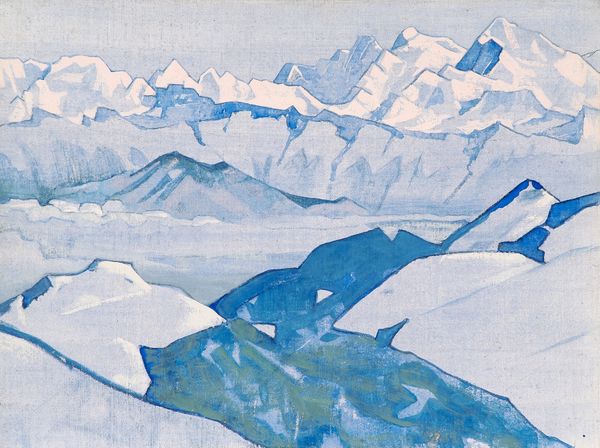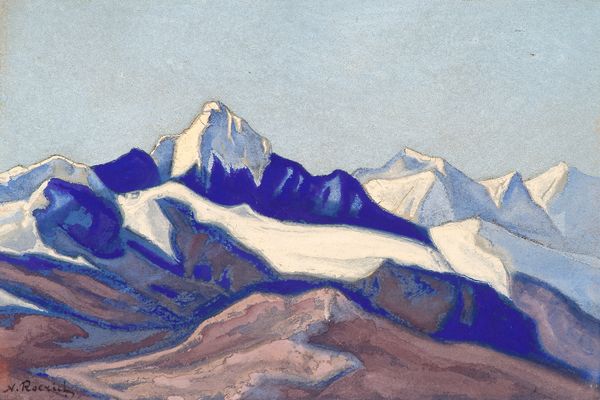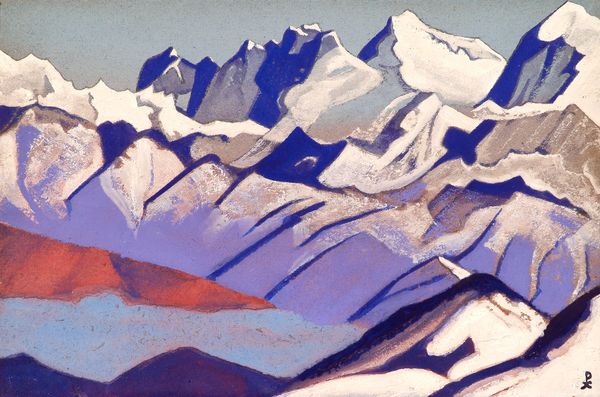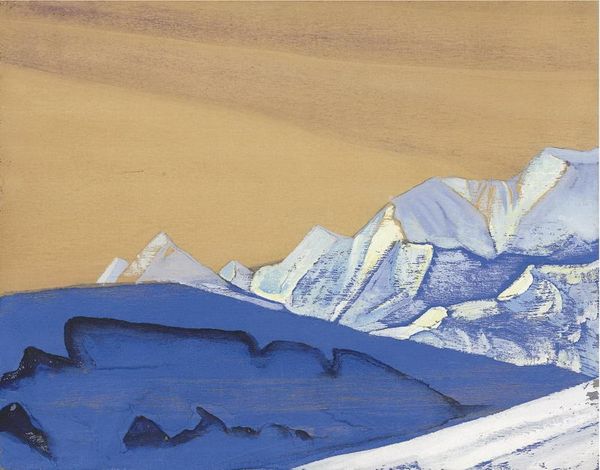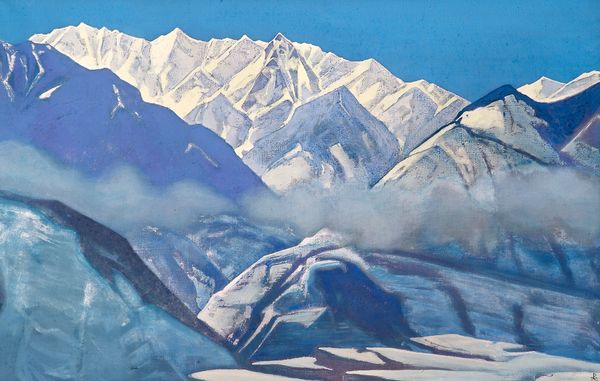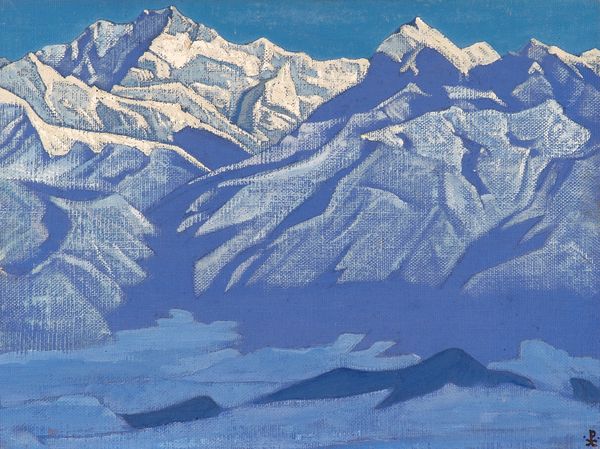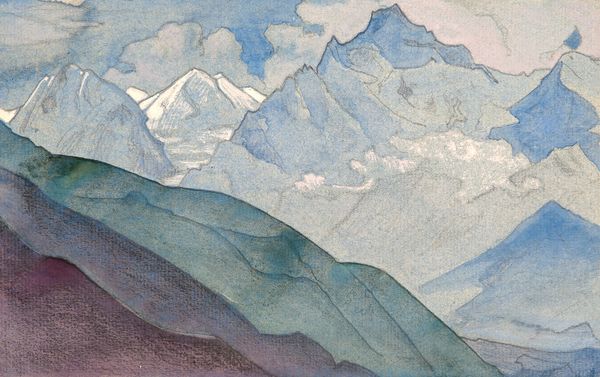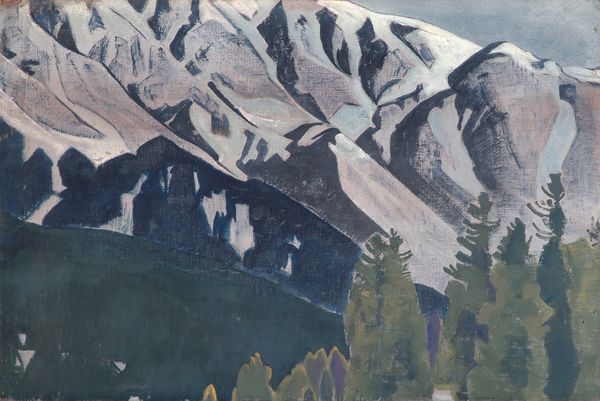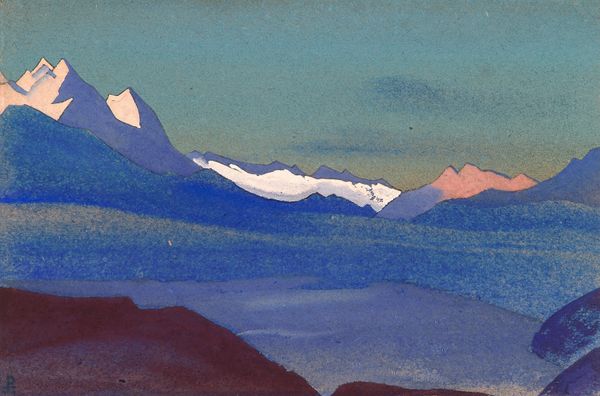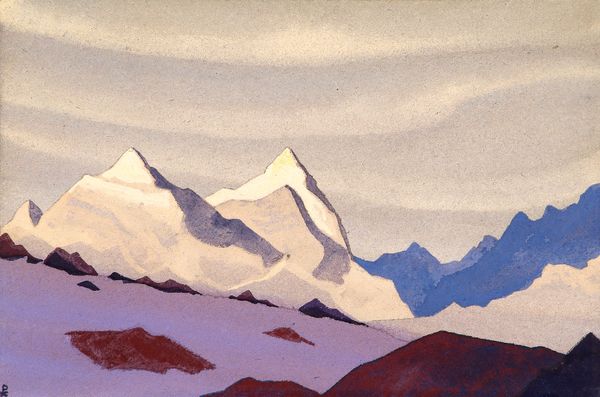
Copyright: Public domain
Curator: Before us is Nicholas Roerich's "Snowy Lift," created in 1924. The piece appears to be executed in both tempera and oil paint, giving it a unique textural quality. Editor: My initial impression is one of stark grandeur. The composition is quite arresting—massive, snow-laden mountains dominating the canvas in shades of icy blues and whites. It’s both serene and imposing. Curator: Roerich's oeuvre is often associated with symbolism and, to some degree, Orientalism. "Snowy Lift," while a landscape, doesn't simply depict a geographical location. Editor: I see what you mean. The painting’s geometric shapes almost resemble facets of a crystal, less representational and more… elemental, perhaps. Did Roerich create this work in response to any specific geo-political events or social movements? Curator: In the 1920s, Roerich was deeply engaged with spiritual and philosophical quests. He believed art could be a unifying force across cultures, so in its purest form, the formal aspects represent ideals of serenity and the sublime. He wanted to invoke a feeling beyond simple depiction. His work promoted intercultural communication and global peace, influenced by his travels and studies in Asia. Editor: So, the painting's aesthetic evokes a sense of shared spiritual and artistic purpose. It becomes interesting to explore how museums contextualize paintings like this one to bridge the socio-cultural context. Is this positioned in relation to the wider discourse of early 20th-century utopian aspirations, perhaps? Curator: Absolutely. Viewing this work solely through a formalist lens does neglect its ambition to create symbolic landscapes rooted in broader societal dreams. However, it is very interesting how he chose his color scheme to support those ideas. Note, also, the simplification of form; it suggests not a particular mountain, but the idea of mountains. Editor: It is, indeed, an evocative piece. The muted palette combined with the sheer scale elicits a powerful emotional response. It encourages contemplation and reflection. Thank you for these insightful observations. Curator: Thank you. Hopefully, it inspires a continued appreciation of both formal construction and sociocultural contexts.
Comments
No comments
Be the first to comment and join the conversation on the ultimate creative platform.
